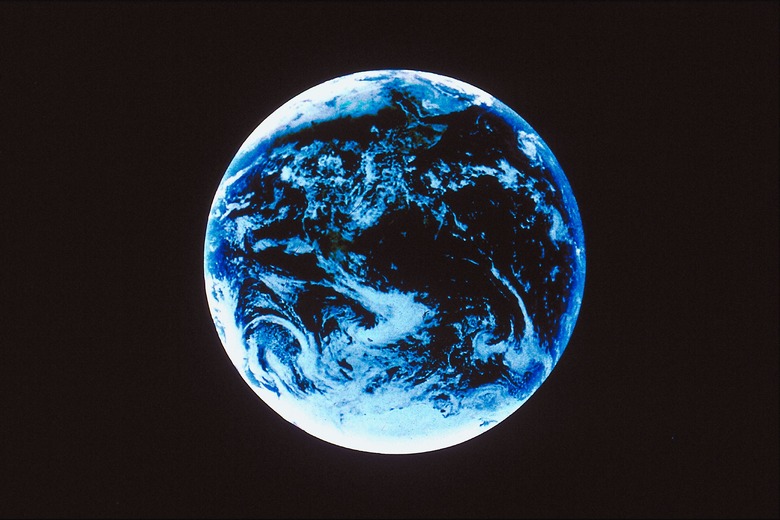Examples Of Planetesimals
Terrestrial planets, gas giants, comets, moons, and asteroids number among the numerous types of heavenly bodies that make up our solar system. Planetesimals form when clumps of rock and matter start to congeal together; they are thought to be the building blocks of planet formation. They are located in many parts of the solar system, and some astronomers believe they are key to the history of planets and moons. Planetesimal matter such as rock and dust may have combined with gravity to form a number of the masses orbiting the sun.
Planetesimal Particulars
Planetesimal Particulars
Russian astronomer Viktor Safronov theorized that, during the formation of the solar system, the attractive force of gravity pulled bits from nebulae – clouds of dust, gasses and plasma – together, creating rocky planetesimals of various sizes. If the planetesimals nearest the sun were composed of matter that had high melting points, they may have formed the four inner planets.
TL;DR (Too Long; Didn't Read)
A similar conjecture, the Chamberlin–Moulton planetesimal hypothesis, proposed similar ideas of planetesimal objects forming in the accretion around planets.
The outer planets could have come from planetesimals made from different materials that formed dense cores, attracting light gases such as hydrogen and helium. This may have resulted in the four giant planets known as gas giants.
In the early solar system, planets started off as planetesimals and debris started to accrete and form protoplanets. These were times of great chaos and collision, but eventually, full planetary systems were formed from the wreckage.
There are many types of nebular formations and nebulae. The sun likely formed out of a solar nebula, and the left over gases and materials would continue to coalesce into smaller bodies. Everything from meteors to Uranus would eventually form from these remaining building blocks.
TL;DR (Too Long; Didn't Read)
Meteors are only classified as meteorites by space agencies like NASA once they make contact with a planet's surface.
Pluto's New Category
Pluto's New Category
Pluto was once considered one of the nine planets in earth's solar system. However, in the latter part of the 20th century, many astronomers believed that Pluto was simply not large enough to be considered a major planet. Some of these scientists began referring to Pluto as a planetesimal. By 2006, most astronomers in the International Astronomical Union generally agreed that Pluto was not a planet, although this was a controversial decision for some scientists and nonscientists. Dropping Pluto from the planetary list was intended as a reclassification rather than a demotion.
TL;DR (Too Long; Didn't Read)
Ceres is another famous dwarf planet that resides in the asteroid belt.
A Big Belt
A Big Belt
In 1943, Irish astronomer Kenneth Edgeworth suggested that undiscovered objects lay near the outer boundary of the solar system. In 1951, Gerard Kuiper offered further evidence to support this idea. In fact, a ring of icy bodies, now commonly known as the Kuiper belt, orbits the sun beyond Neptune. Some of the larger objects in the belt are considered planetesimals or "super comets." Since 1992, many have been identified. Pluto is one of the larger bodies within this grouping. There are countless smaller Kuiper Belt objects, and there may even be larger planets or celestial bodies waiting to be discovered.
Beyond this Kuiper Belt lies an expanse of far-away icy comets, asteroids, and rocky planets called the Oort Cloud. These objects are hard to directly confirm because of their distance and size, but their existence is supported by the appearance of comets and small bodies appearing periodically in the solar system.
Many Moons
Many Moons
Many of the moons orbiting planets are sometimes considered planetesimals. The largest of Neptune's 13 moons, Triton, falls into this category. One of Saturn's 53 moons, Phoebe, is a planetesimal, as well as both of Mars' moons, Phobos and Deimos. In addition, Jupiter has 50 moons, and several of these match the criteria for planetesimals.
There is some debate as to the differentiation of planetesimals and moons. Some of the moons orbiting these planets are thought to be left overs of planetary formation or the protoplanetary disk, but it is hard to determine conclusively.
TL;DR (Too Long; Didn't Read)
Venus and Mercury are the only two planets in the solar system without moons.
References
- Rochester Institute of Technology: Terrestrial Bodies in the Solar System
- Universe Today: Planetesimals
- NASA: Earth Rocks on the Moon
- Encyclopedia Britannica: Planetesimal
- Universe Today: What Is A Nebula?
- Harvard University: International Comet Quarterly: Is Pluto a giant comet?
- National Geographic: Pluto Not a Planet, Astronomers Rule
- Encyclopedia Britannica: Kuiper Belt
- University of Maryland, Baltimore County: The Kuiper Belt
- NASA: Neptune: Moons
Cite This Article
MLA
Sherwood, Susan. "Examples Of Planetesimals" sciencing.com, https://www.sciencing.com/examples-planetesimals-16715/. 16 June 2023.
APA
Sherwood, Susan. (2023, June 16). Examples Of Planetesimals. sciencing.com. Retrieved from https://www.sciencing.com/examples-planetesimals-16715/
Chicago
Sherwood, Susan. Examples Of Planetesimals last modified June 16, 2023. https://www.sciencing.com/examples-planetesimals-16715/
